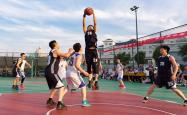A. donax shows strong genetic uniformity and no seed production. This situation is reversed in Asia
ABSTRACT
Arundo donax L. (Poaceae) is considered to be one of the worst invasive plants in the world, and here, we present a synthesis of all aspects of its biology, ecology and management that are relevant to understanding its invasive behaviour. This report presents information on the taxonomy, morphology, distribution, history of introduction and spread, ecology, responses to abiotic and biotic factors, biology, negative impacts, management and uses within the framework of a series of Botany Letters on Monographs on invasive plants in Europe. Arundo donax (giant reed) originated in subtropical Asia and is invasive in other warm regions worldwide, especially in degraded riparian areas. Introduced for use in agriculture, erosion control and construction in the Mediterranean European region since ancient times, it has become naturalized in several freshwater habitats and in disturbed areas. In its introduced range, A. donax shows strong genetic uniformity and no seed production. This situation is reversed in Asia, where this taxon is fertile and morphologically and genetically polymorphic. This perennial grass combines rhizomatous clonal growth with a tolerance to a wide variety of ecological conditions, such as high salinity levels and long droughts. This tall reed can increase the risk of fire, alter the natural drainage of channels and invade very sensitive habitats, posing a serious threat to riparian habitats and freshwater ecosystems. Effective methods to control A. donax are tarps on a cleared giant reed field to completely cover the affected zone, rhizome removal using a modified backhoe bucket adapted to separate soil from the rhizomes, and herbicide application on leaves. The combined technique of herbicide treatment plus stem-cutting can be included in management programmes, and this technique needs to be monitored over the long term to assess its success and to ensure native species colonization and ecosystem recovery. Regarding biological control, A. donax is host to different insect species that have been released to control it in parts of its non-native range (North America) with some success. However, these different methods of control should continue to be studied, evaluating the risks posed to the environment and the control level achieved. In this context, scientific, political and administrative efforts as well as environmental education are effective assets to address the management of this invasive species.

本文 zblog模板 原创,转载保留链接!网址:https://gulangwanhotelxiamen.com/post/1178.html
1.本站遵循行业规范,任何转载的稿件都会明确标注作者和来源;2.本站的原创文章,请转载时务必注明文章作者和来源,不尊重原创的行为我们将追究责任;3.作者投稿可能会经我们编辑修改或补充。








